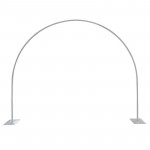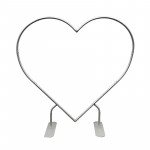Floral Arranging in a Clear Vase - the Wrong Way!

Floral Arranging in a Clear Vase - the Wrong Way!
We are frequently asked how to design a floral arrangement in a clear vase that conceals the mechanics or how to give the impression that there is water in the glass. Even though the project didn't work out exactly as I had anticipated (you'll learn more about that as you read on), there are some excellent lessons you can use to make sure YOUR project is a success!
The #1 Ingredient!
In this blog, we'll test out Elmer's Clear Glue trick!
The length of time it takes for the adhesive to dry is a common query I encounter when I see this hack. I won't give away too much here, but since my project hasn't completely dried, I'm not sure how long. I promise to update this blog as soon as I'm positive it's entirely healed!
Choose Your Flowers!
I wanted to use the rainbow flowers I had left over from my blog post, where I showed you how to dye them, because it's Pride Month! This glue method works with any floral arrangement and color scheme.
Use Leftover Faux Filler Stems!
The ideal option is to use no floral wire at all if you wish to prevent floral wire from showing through the clear vase! I have a large bucket filled with fake foliage and filler stems from past projects in my craft area. Some come from extremely long foliage stems that I had to chop off for an arrangement, and others are from fillers that I separated the leaves or vibrant portions off and stemmed one at a time. In any case, save those extra stems for tasks like this one!
I use a bamboo skewer to make a little hole in the bottom of the bloom and then gently twist it outward to widen it, just to make sure there's a big enough hole for these thicker stems. You can also cut off the plastic at the tip of the stems to reveal the wire in the middle, which is another way to attach them to your flowers (imagine it as stripping a cable wire). Attaching your stems to the flower requires a substantial amount of glue, so I suggest dabbing the bottom of the bloom before proceeding.
Choose Your Greenery (and wisely!)
This is the point at which I made a significant mistake. I neglected to consider their stems, even though I adore the way the little white blooms contrast with the rainbow-colored petals. Their stems are covered in paper.
The paper-wrapped stems began to unravel a lot when they came into contact with the adhesive for whatever reason. In addition, they began to seep color into the transparent glue! That is the haziness visible in the project's finished image. Had it not been for that mistake, the glue would still have stayed as transparent as pure water.
Choose Your Vessel and Add a Tape Grid!
I decided to use a clear vase with an oblong cylinder form. Initially, I would apply less glue and increase the surface area so that it dries more quickly. That was not the case.
It's time to prepare your vessel after you've prepared your flowers and greenery/filler. Your flowers will stay in place while the glue dries if you use tape to make a grid-like design on the vase's top. To make it look better in photos, I used green vinyl tape, but clear tape is a far better choice!
I would style your flowers and greenery at this point once the grid has been constructed. If you need to pull something out to cut something down to size, you can end up with a sticky mess on your hands. Make sure all stems are cut to the proper size BEFORE the glue reaches the bottom of the vase. Set everything aside in blocks that match the grid's holes if you want to be sure that everything will return to how you had it earlier.
Next, fill the vase's bottom with your clear glue! I filled it up to about 1/3 of the way before realizing that I had cut the filler bloom stems far too short for the glue to hold them in place. If you want to give your item an extra decorative touch, you may also add glass beads or cleaned river rocks to the bottom of the glass container before adding flowers or other foliage. Due to the over-cutting of some of my stems, I filled the vase to over 3/4. There was a LOT of transparent glue—roughly 26 to 28 ounces—that needed to dry.
Learn From My Mistakes!
And this is my half-completed, half-cute, half-imperfect project! I do want to take out the green tape that I used to make the grid after the glue has completely dried. As of right now, it continues to stabilize the filler and flowers and prevent things from moving too much.
Overall, this endeavor wasn't the most successful one. However! I'll leave you with the essential things to remember to make your arrangement a stunning success—it was a great experiment!
Use plastic stems rather than paper ones; I'll test preserved and dried stems and report back on any "bleeding" soon on my blog.
Keep your stems long enough to reach the vase's bottom; this will make the arrangement appear cleaner and more lifelike.
When making the grid on top of your vessel, use clear tape.
Give the glue plenty of time to dry and cure; as of right now, it has been drying for three to four days and has the consistency of a thick milkshake. That is, it is still mobile.
If you decide to try this project, good luck and do let us know how it turns out!








